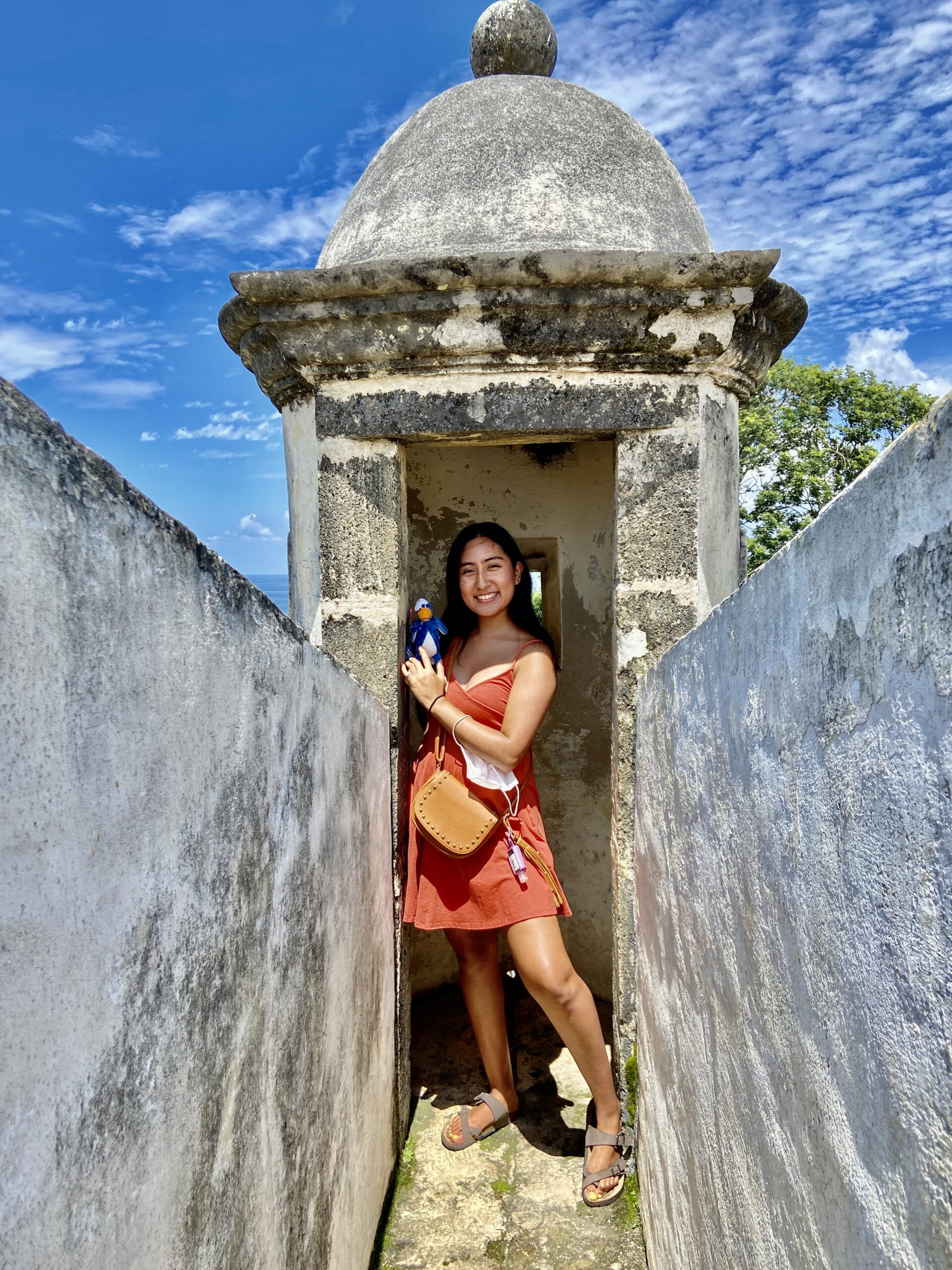
There are pirates in the peninsula!
This weekend, my study abroad program sponsored an overnight excursion to Campeche, the capital city of the state of Campeche! It is a beautiful, coastal city on the west side of the Yucatan peninsula that is most characterized by its colonial period walls. The inner part of this city is small, but pops with bright colored buildings, churches, and the history of pirates! No, not the Pirates of the Caribbean, but pirates from Europe that were sent to the Americas by the English and Dutch kingdoms to steal treasures that the Spanish had stolen from the natives of this land. La ciudad amurallada, as it is now called, was so threatened by these attacks that it began to build (by Mayan enslaved people) forts, walls, moats, and other militarized architecture to protect the city and its treasures. There are two very interesting facts about this history, though. The first one is that by the time the walls were finished, European pirate attacks had decreased so much that the walls weren’t necessarily needed anymore. The second one is that the residents of Campeche began to “win over the sea.” This means that they started “filling in” the ocean with dirt and expanded their land. Thus, today there are around 4 extra streets around the original walls that weren’t there at the time of its construction.
While touring the city, our guide explained to the group that there is archeological evidence that Campeche was home to not only Mayas and Spanish people, but also to enslaved Africans that were brought to the Americas by force. The guide used herself as an example to display the prevalent characteristics in Campechanos that show this mix of people. However, she clearly described herself as a Campechana, not Spanish, Indigenous or Black. This is a result of the idea of mestizaje that has dominated Mexico in a way that didn’t happen in the US. Additionally, I think it is important for people who don’t live in these southernmost Mexican states (with this much diversity) to learn about African influences and people in Mexico because it is the population that has been most invisibilized despite their contributions to the building of the nation. For example, it was only until my first year of college that I even learned about Afro Mexicans, despite my family being from Oaxaca, a state home to a big percentage of the country’s afro descendant population. This visibility is the first step in the process to not just decolonize the way we think about the Mexican population, but also grant Afro Mexicans rights and justices that have been deprived from them for a long time. Thus, in the process of talking about how Mexicans are a “mix of races” (race is a social construct), these coastal southern cities provide a good setting for students, tourists, and even other Mexicans, to hear personal accounts of different meanings of being Mexican, and not just the mainstream “mestizo” narrative, as well as show that the Mexican identity spans beyond Spanish-influenced horse and bull stories and is a relation with the sea and pirates too.
